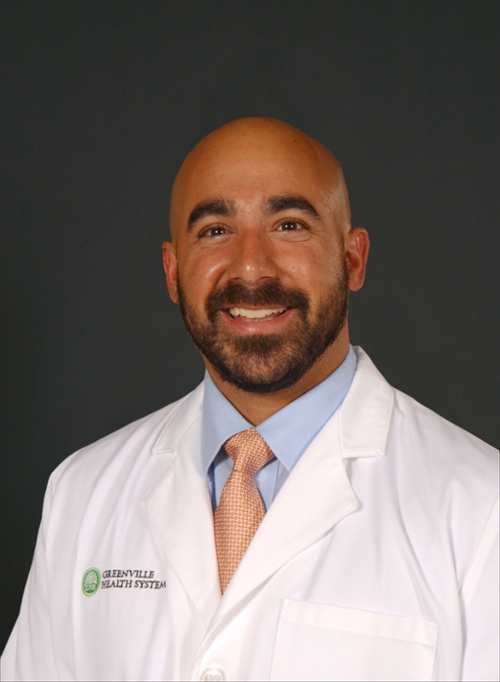About
Dr. Sridhar born and raised in Daytona Beach, Florida and majored in Finance at the University of Miami. He attended medical school at the University of Florida. He completed his Orthopaedic Surgery residency at Emory University and his Trauma fellowship at Harvard University. He has been practicing Orthopaedic Trauma here in Greenville for six years. He is also a clinical assistant professor at the University of South Carolina School of Medicine Greenville. Early on in his time at Prisma Health, his current chairman got him involved in clinical collaboration with Clemson's senior design bioengineering students. The team has worked on a multitude of novel devices to enhance patient care in the operating room. He has become the orthopaedic point person for these students with regard to shadowing opportunities to create a comprehensive bridge from the laboratory workbench to the clinical operating room. Dr. Sridhar is currently working with Dr. Sarah Floyd on incorporating artificial intelligence in to the way proximal humerus fractures are treated. Management of this diagnosis remains one of the most controversial in all of orthopaedic surgery, and they hope to come up with a highly novel way to better care for patients either surgically or non-surgically.
How their research is transforming health care
In collaboration with Clemson bioengineering students, they have designed an array of devices to better surgically treat diagnoses from fractures to infection. This very unique opportunity for Dr. Sridhar and the students is truly what it takes to drive technological innovation across healthcare. Some of his favorite devices they have worked on have included a low-profile, deep wire cutter to trim retained wires flush against the bone in tight spaces that are placed across periarticular fractures. Another device is a cannulated depth gauge for percutaneous screws as we try to accomplish more and more minimally-invasive fracture surgery to speed up patients' recovery with a reduced risk of infection and nonunion. As they continue to see more and more infections, those within un-instrumented bone and those around orthopedic implants, physicians continue to think of ways to microscopically and macroscopically combat the causative organisms. Often it is challenging to deliver local antibiotics to the bone and soft tissues to augment that given intravenously or by mouth. To this end, he and his team have worked on an intramedullary, syringe-type device to optimize the success of delivering antibiotic powder or that within resorbable cement down the canals of long bones including the femur and tibia.
Health research keywords
fracture, nonunion, arthroplasty, biomechanics, infection

